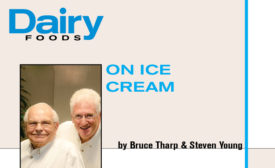Dairy Foods Columnists
The dairy industry is committed to reducing its environmental impacts, but it could do more
Read More
Improve nonstandardized frozen desserts
The creation of ice cream-like functionalities and sensory appeal involves new challenges on multiple fronts
April 3, 2018
Reducing sugar content requires complex strategy
Newer stevia sweetener blends are optimized for performance in dairy
April 2, 2018
Take a proactive approach to reduce recall risks
By putting the right programs and procedures in place, dairy facilities could help prevent cross-contact and contamination that lead to costly recalls.
March 14, 2018
Choose the best whey protein
Several factors determine the proper selection of whey protein ingredients.
March 7, 2018
Purple superfruits pack antioxidant power
Science around the health benefits of fruits containing anthocyanins continues to grow.
March 6, 2018
Develop the best plan for food safety and hygiene training
Training for equipment operations and maintenance is important to FSMA
February 12, 2018
A nature-based spoilage solution?
Bio-protective cultures could make your brand more attractive to diverse consumers
February 8, 2018
Revisiting the clean-label ice cream conundrum
The obstacles to creating clean-label ice cream seem very much the same as they did a year ago.
February 7, 2018
Stay ahead of the curve. Unlock a dose of cutting-edge insights.
Receive our premium content directly to your inbox.
SIGN-UP TODAYCopyright ©2024. All Rights Reserved BNP Media.
Design, CMS, Hosting & Web Development :: ePublishing











